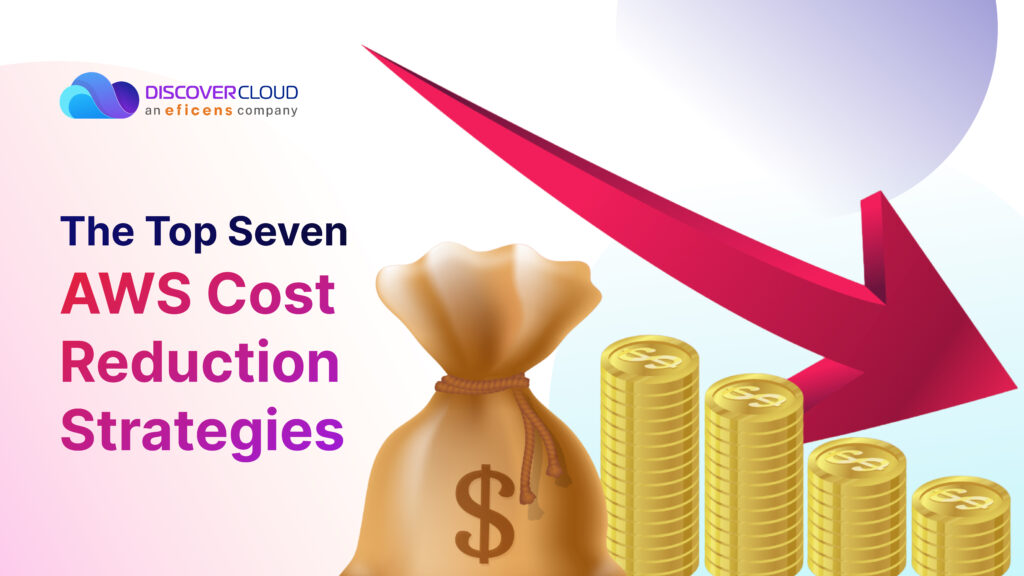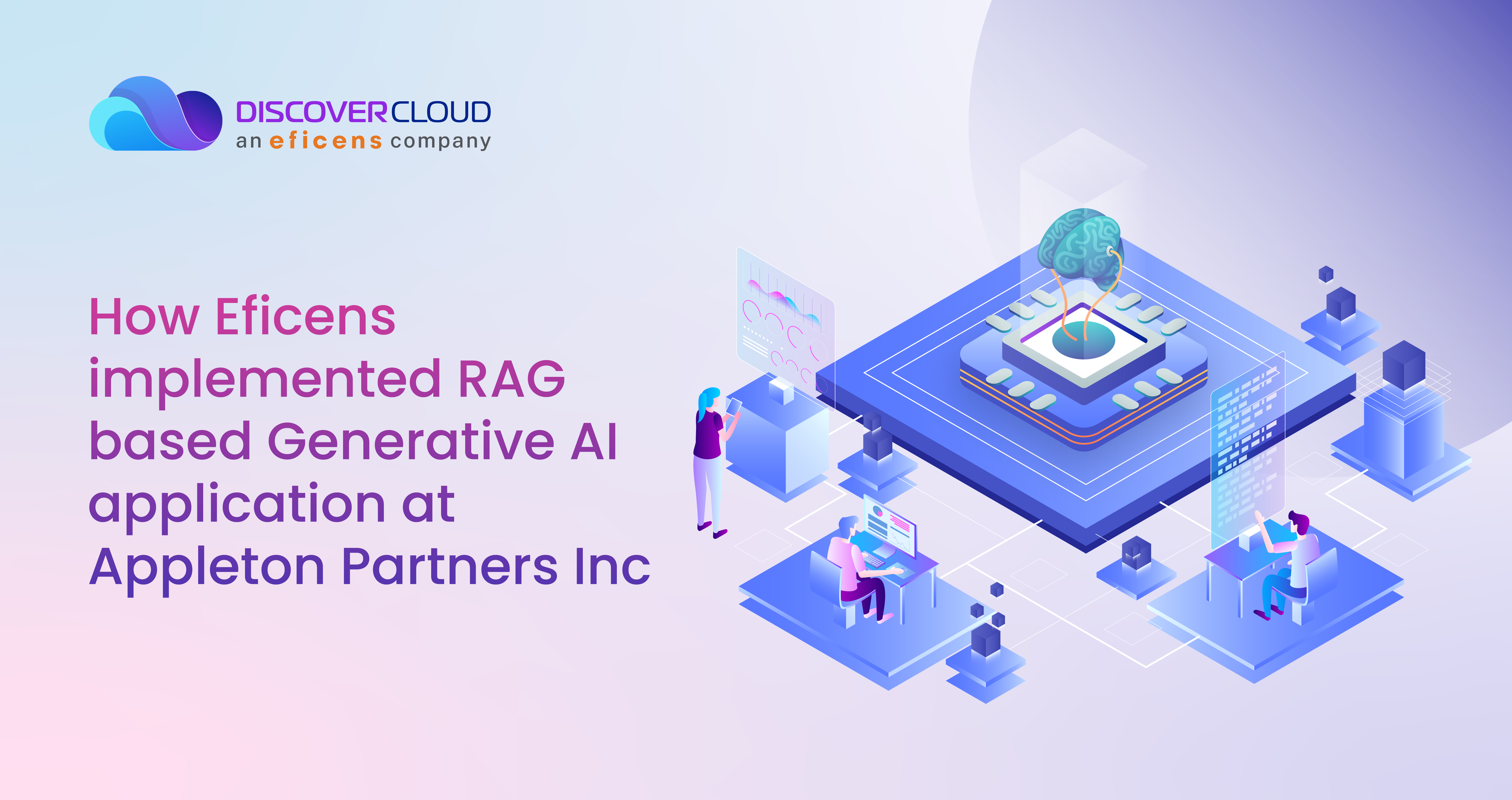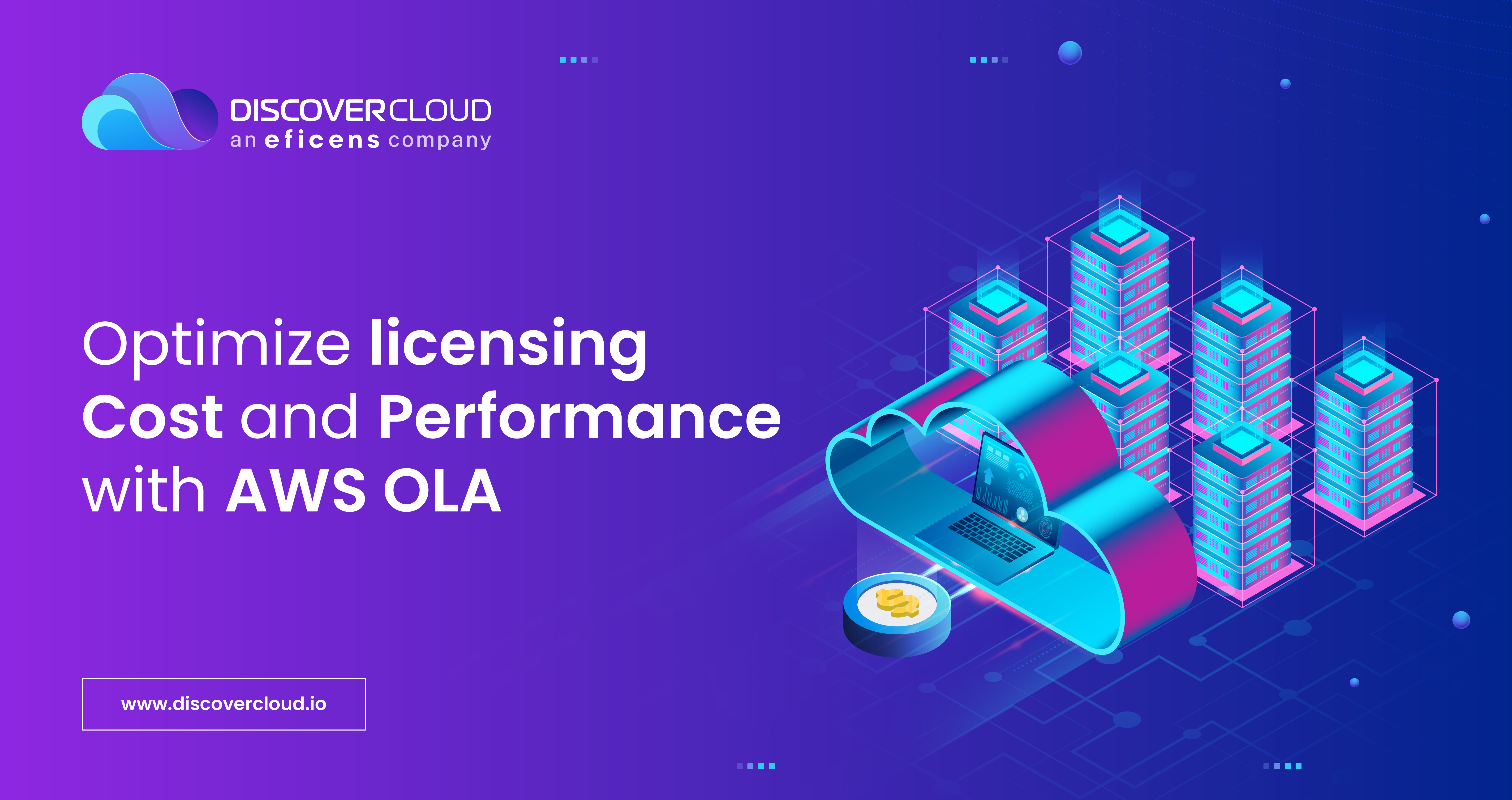-
The Top AWS Cost Reduction Strategies
- Right-sizing your instances and services
- Using reserved instances and savings plans
- Taking advantage of spot instances and auto-scaling
- Choosing the optimal AWS region and availability zone
- Optimizing data transfer and storage costs
- Leveraging AWS free tier and billing dashboard
- Using Cloud Cost Management and Optimization Tools
- Re-architecting your applications and infrastructure
- Why DiscoverCloud?
- FAQs about AWS Pricing
- Summing Up
Amazon Web Services (AWS) is the leading cloud provider in the world, with a market share of 33.8%. So, many organizations use AWS to run their applications and services but often face the challenge of managing and optimizing their cloud costs, leading to large wasted costs. How large?
Businesses waste up to an enormous 70% of cloud costs unknowingly! So, it is clearly essential to implement effective AWS cost-reduction strategies that can help save money and improve performance. 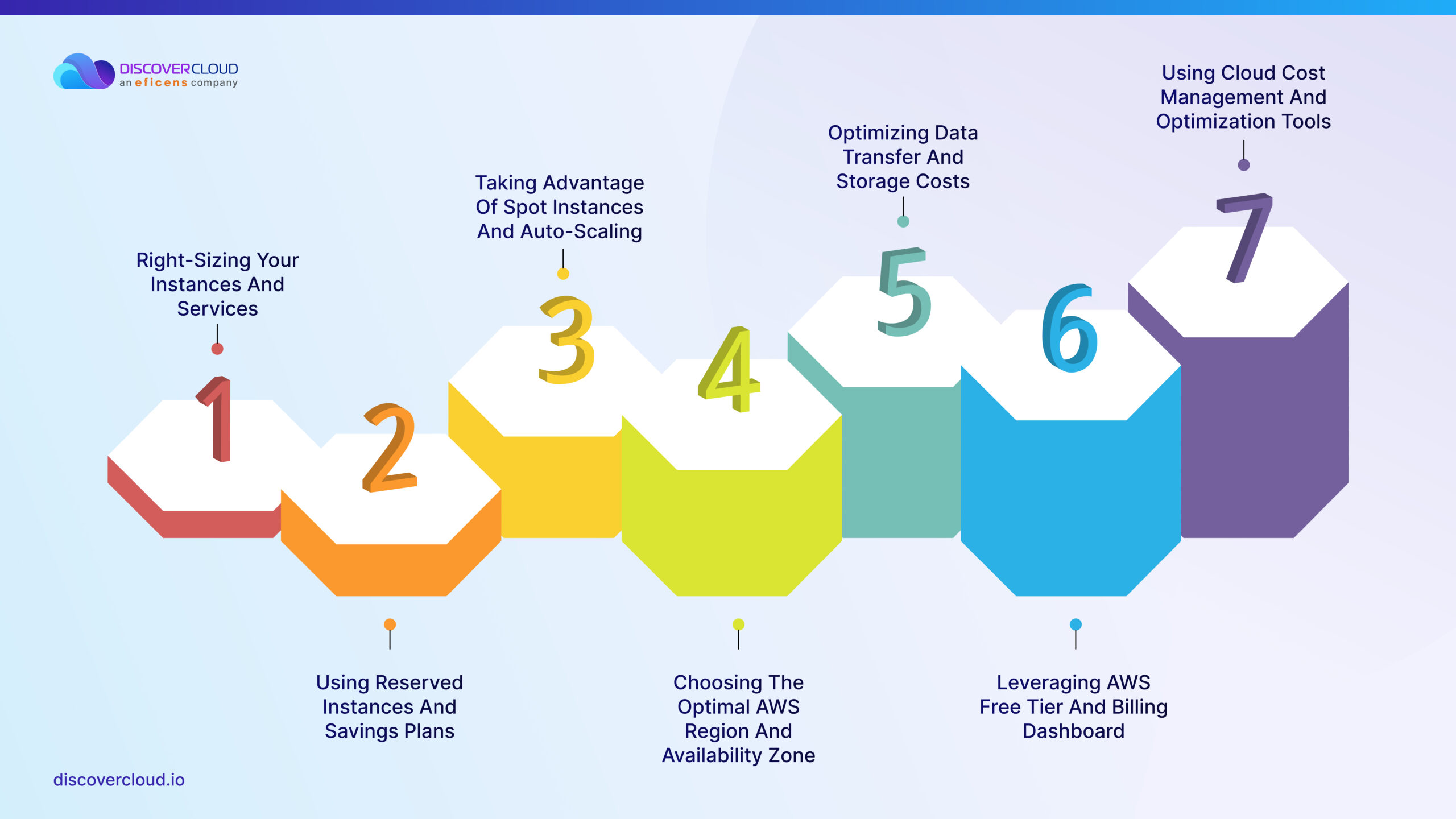
In this article, we will discuss some of the best practices and techniques for reducing AWS costs. Get ready to learn and apply proven AWS cost reduction strategies to boost your cloud efficiency with these seven tactics-
The Top AWS Cost Reduction Strategies
Right-sizing your instances and services
Reducing AWS costs often feels like an elusive goal, but with the strategy of “right-sizing” instances and services, it’s within your grasp. Right-sizing is all about striking a careful balance – choosing the ideal type, size, and configuration that dovetails with your workload needs. The aim here? To sidestep the hurdles of over-provisioning or under-provisioning resources, which can saddle you with wasted capacity or leave you resource-starved.
To right-size your instances and services, you need to monitor and analyze your usage patterns, performance metrics, and resource utilization. You can use native AWS tools such as CloudWatch, Trusted Advisor, and Compute Optimizer to get recommendations and insights on how to optimize your resources. You can also use third-party tools and experts such as DiscoverCloud to get more advanced analysis, suggestions, and automation.
Some of the benefits of right-sizing your instances and services are:
- Slashing operational costs by paying only for what you need, bypassing unnecessary expenses.
- Say bye to bottlenecks and latency; and enjoy smoother functioning by boosting application performance.
- Fortifying security and reliability by scaling down the attack surface and downtime while ramping up safety.
Using reserved instances and savings plans
Clipping your AWS costs becomes a breeze with reserved instances and savings plans. These pricing models are part trade-off, part magic trick—by pledging to use a set amount of resources for a fixed term, you earn discounts, saving up to a hefty 72% as compared to on-demand costs.
Reserved instances flex and bend to fit an array of needs, be it EC2 instances, RDS instances, Elasticsearch domains, Redshift clusters, DynamoDB capacity units, and beyond. You get many choices —opt between one or three-year terms, and between standard and convertible options. The standard option trades higher discounts for lesser flexibility, while the convertible ones are more adaptable, letting you flip between different instance families or regions as needed but offering slightly lower discounts.
Savings plans are applicable for EC2 instances, Fargate tasks, Lambda functions, etc. You can choose between compute savings plans or EC2 instance savings plans. Compute savings plans offer more flexibility but lower discounts, while EC2 instance savings plans offer more discounts but less flexibility. You can also choose between one-year or three-year terms.
Here are some key benefits of using reserved instances and savings plans:
- Reducing your cloud costs by locking in lower rates for predictable workloads
- Increasing your budget predictability by paying a fixed amount per hour or month
- Retaining your flexibility by choosing the option that suits your needs
All of this might sound a tad daunting, but that’s where DiscoverCloud enters the picture! With seasoned experts to help navigate these options and the transparency and insights from our free Trekora and Traverse accelerators, we’re the co-pilots your business needs in the cloud.
Taking advantage of spot instances and auto-scaling
How about squeezing more from your AWS resource without nicking your budget? Say hello to spot instances and auto-scaling – your gateway to tap into AWS’s unused capacity at bargain prices. Think of spot instances as AWS’s clearance sale – up to 90% off on on-demand prices.
Spot instances cater to a broad set of applications, including EC2 instances, EMR clusters, or ECS tasks, to name a few. They are designed for workloads that are time-flexible, can handle occasional hiccups, fluctuations, or interruptions. But keep in mind, AWS can recall spot instances on a short two-minute notice, which is why it’s crucial to have your applications designed to withstand such calls.
Another related option in the arsenal of AWS cost reduction strategies is auto-scaling. Like a virtual rubber band, it allows for automatic adjustments of your resource capacity in tune with demand or schedule. Apply it to AWS EC2 instances, ECS tasks, EKS pods, DynamoDB tables, and more to optimize performance, availability, and keep costs on a leash.
The benefits of such AWS cost reduction strategies are threefold:
- Pad your budget with funds saved by capitalizing on idle or excess capacity in the AWS cloud.
- Service mounting or ebbing workloads with improved scalability and elasticity.
- Solidify your resilience and uptime by spreading your resources across multiple zones.
Cloud economics could get complex, and that’s where we come in again! DiscoverCloud’s Trekora cost-optimization accelerator is backed by our experts, ready to maximize your cloud savings and turn complexities into opportunities.
Choosing the optimal AWS region and availability zone
Choosing the right AWS region and availability zone can be likened to selecting the prime real estate for your cloud resources. It’s more than geography; though! it’s about relevance and value optimization. AWS regions denote the physical locations where AWS’s data centers hum, while availability zones are snug within these regions serving as isolated infrastructural carriers.
The choice of the region and zone can be crucial in AWS cost reduction strategies and has four core aspects:
- Region-based Pricing Diversities: Price tags differ from region to region for the same resource. For instance, an m5.large EC2 instance in the US East (N. Virginia) costs around $0.096 per hour, however, the identical instance in the Asia Pacific (Tokyo) commands $0.136 per hour. A stitch in time here by opting for a lower-priced region can evidently save nine in costs.
- Latency and Performance Variables: A region closer to the bulk of your users assures reduced network latency and better user experience. Having your users mostly in Europe makes regions like EU (Ireland) or EU (Frankfurt) sensible choices.
- Region-Specific Compliance and Regulatory Clauses: Different regions have distinctive data protection laws and standards, such as GDPR. If your data handling needs to abide by these, regions that meet these standards, like EU (London) or EU (Paris), become preferable.
- Availability Zone-based Data Transfer and Availability Costs: Data transfer costs vary based on zones and regions. Reducing cross-zone or inter-region data transfers can lead to cost savings. However, it’s essential to balance this with the need to distribute resources across multiple zones or regions for enhanced fault tolerance and resilience.
The potential benefits of a well-calculated decision include-
- Marked cost-savings
- Improved user satisfaction courtesy of better performance
- Ensured compliance
- Optimized data transfer and availability.
Effectively navigating these complex trade-offs and decisions can be a daunting task, but we can make it easy. With the wealth of insights from the DiscoverCloud proprietary accelerators and the deep expertise of our team, we help you make cost-efficient, well-informed choices to truly simplify your cloud complexity.
Optimizing data transfer and storage costs
Focusing on AWS costs, let’s delve into the often overlooked or underestimated area—optimizing data transfer and storage costs. A significant slice of your cloud expenses is possibly due to large or frequent data movements or backups.
So, the question is- How to keep a leash on data transfer costs?
- Establish a secure and dedicated connection between your on-premises network and AWS cloud via AWS Direct Connect or AWS VPN. This approach can effectively cut down bandwidth costs while enhancing performance.
- Use the global network power of AWS CloudFront or AWS Global Accelerator to circulate your content or applications to your users. It’s all about reducing latency and enriching user experience.
- Tap into AWS VPC Endpoints or AWS PrivateLink to access AWS services from your VPC without resorting to public internet. The benefits? Well, reduction in data transfer costs and a boost in security.
- Utilize AWS DataSync or AWS Snow Family to swiftly and securely transfer hefty amounts of data to or from AWS cloud. It’s all about efficiency and time.
Now, the next question is naturally- How to get more from your storage budget?
- Go for Amazon S3 Intelligent-Tiering or Amazon S3 Glacier to hold your less accessed or archived data in less expensive storage classes. It helps in cost reduction while ensuring durability.
- Store your regularly accessed or performance-hungry data in higher-performance storage classes like Amazon EBS gp3 volumes or Amazon EFS One Zone. The result is improved throughput and IOPS.
- Automate the transition or deletion of your data based on age or frequency with Amazon S3 Lifecycle Policies or Amazon EBS Snapshots Lifecycle Manager. Less storage costs and a simplified management? Count us in!
- Use Amazon S3 Storage Lens or Amazon EBS Cost Monitor to get a clear picture of your storage usage and optimize costs across your accounts and regions.
Your takeaway benefits from such optimizations may include-
- Saving money through reduced data movement or backups
- Enhanced performance and user experience thanks to improved data delivery speed and reliability
- Simplified management and compliance through data lifecycle automation.
While these steps can help, it’s quite a task to navigate the sea of options and trade-offs. But the right accelerator tools coupled with expert guidance can make optimal cost efficiency less of a chore and more of an achievement.
Leveraging AWS free tier and billing dashboard
AWS free tier is like your pass to a yearlong tech gala, with notable AWS services such as EC2 instances, S3 buckets, Lambda functions, and more, all on a complimentary basis up to specific limits. It becomes your experimental playground to explore the spectrum of AWS services, and that too, without digging a hole in your pocket. However, do keep an eye on the calendar and gauge the usage boundaries – crossing over might ask for a credit card swipe.
Switching gears to the AWS billing dashboard, it stands like your 24/7 financial advisor displaying your current month’s spending scenario, anticipated spending, budget alerts, cost allocation tags, and more. Utilizing this tool can help you stay updated about cloud spending and dodge unforeseen charges. Throw in the feature to set budgets and receive alerts, and you are in control, navigating away from crossing your spending thresholds.
What advantages can you expect with such an approach?
- A possibility to save considerable money as AWS lets you leverage some services for free or at low cost.
- A panoramic and timely view of your cloud spending and tendencies.
- No shocks on your bill, no overspending – thanks to the vigilance through budgets and alerts.
While it might seem straightforward, effectively utilizing these features requires a deep understanding of AWS services and cost structure. Simplifying this complexity is precisely what we aim for here at DiscoverCloud. When you couple our Trekora cloud cost optimizer with these AWS cost reduction strategies, you are set not just to survive but thrive in the economically challenging cloud world.
Using Cloud Cost Management and Optimization Tools
One of the most powerful AWS cost reduction strategies is to use cloud cost management and optimization tools, which are software solutions that help you monitor, analyze, optimize, and automate your cloud costs. Cloud cost management and optimization tools can provide you with features such as:
- Cost Reporting and Visualization: Imagine a graphical display of your expenses, every penny tracked and accounted for.
- Cost Allocation and Attribution: Put a name on every dollar spent and know what’s draining your budget.
- Cost Forecasting and Budgeting: Predict what’s coming for your wallet, setting the budget in advance.
- Cost Optimization and Recommendation: Get advice on the best course for cost savings.
- Cost Governance and Policy Enforcement: Make sure no rogue spending goes unchecked.
- Cost Anomaly Detection and Alerting: A vigilant watch, flagging suspicious ups and downs in your bill.
Some of the examples of powerful cloud cost management and optimization tools used in AWS cost reduction strategies are:
- AWS Cost Explorer: A native AWS tool that allows you to visualize and explore your AWS costs and usage over time.
- AWS Cost Anomaly Detection: Another native AWS tool that allows you to detect and alert on anomalous spikes or drops in your AWS costs or usage.
- DiscoverCloud: A free online platform offering third-party tools like Trekora and Traverse that allow you to analyze and optimize your cloud costs with machine learning, analytics, and automation. It is also backed by experts who are here to work with you to make the most of the insights achieved.
Re-architecting your applications and infrastructure
Re-architecting your applications and infrastructure on AWS can lead to significant cost savings while also improving performance, scalability, and reliability. Here are some strategies to help you achieve cost savings through rearchitecting:
- Serverless Computing: Consider moving to serverless computing services like AWS Lambda. Serverless allows you to pay only for the computing resources you consume, reducing the cost of idle resources.
- Containerization: Use Amazon Elastic Container Service (ECS) or Amazon Elastic Kubernetes Service (EKS) to containerize your applications. Containers provide better resource utilization and scalability, leading to cost savings.
Why DiscoverCloud?
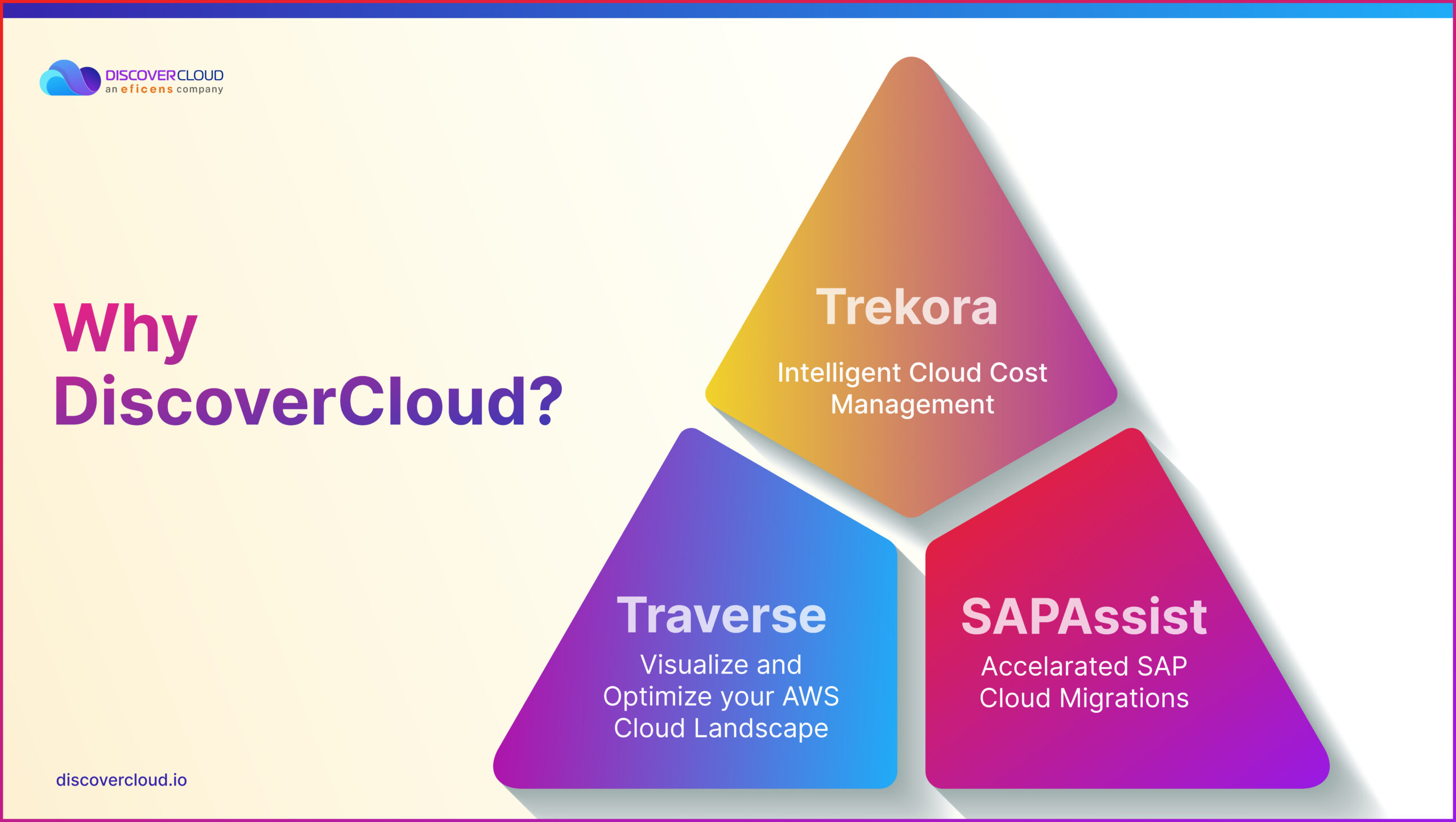
Despite the promises of cost-effectiveness and efficiency, the reality of unforeseen costs, complex configurations, and policy enforcement can overshadow those initial benefits. That’s where DiscoverCloud shines a torch and illuminates the path to AWS success! How?
- First and foremost, think of DiscoverCloud as your budget’s best friend. The Trekora accelerator, along with our experts, keenly uncover wasteful expenditures, inefficiencies, or unexpected spending sprawling across your cloudscape. Within minutes, we zero down on areas where your money might be trickling away unnoticed.
- But that’s not all! DiscoverCloud’s Traverse accelerator is your perfect workload discovery tool that gives visibility like never before into your AWS Cloud with real-time data insights. Traverse uncovers the fundamentals of your infrastructure and displays it through vibrant diagrams that anyone can digest—including tech pros as well as decision-makers, regardless of their technological expertise.
- The insights gained from Traverse’s real-time data enable you to tweak your cloud environment with surgical precision and agility. This accelerator ignites a paradigm shift in decision-making, evolving from reactive firefighting to proactive strategizing that is carried out in hours, not weeks!
- Our third accelerator, SAPAssist, adds to your arsenal by providing custom SAP Migration strategies tailored to your business.
- Moreover, DiscoverCloud rides shotgun; steering you clear of non-compliance hiccups. It works tirelessly in the background, ramping up control mechanisms and ensuring your cloud spending aligns with the established policies and best practices. It’s not just about eliminating unnecessary costs but also about adhering to the rule book.
Briefly, your budgeting and decision-making process gets turbo-charged with DiscoverCloud’s analytical prowess. Instead of being awash with data but starved of insights, you’ll be armed with actionable recommendations, helping optimise your cloud costs from granular to grand scales. With the aid of tools like Trekora and Traverse, you now call the shots in your cloud and financial strategy. Simply put, DiscoverCloud is your compass in the journey of digital transformation.
So, visit the DiscoverCloud online portal and try the accelerators for free now!
FAQs about AWS Pricing
Now that the basics of cost optimization are clear, let’s address some common questions about AWS pricing-
Q: How can I estimate my AWS costs before using any service?
A: You can use the AWS Pricing Calculator to estimate your AWS costs based on the services, regions, configurations, and usage patterns that you select.
Q: How can I get notified when my AWS costs exceed a certain limit?
A: You can use the AWS Budgets feature to create custom budgets for your AWS costs or usage, and set up alerts to notify you via email or SMS when you exceed or are forecasted to exceed your budget thresholds.
Q: How can I get a detailed breakdown of my AWS costs by service, account, tag, etc.?
A: You can use the AWS Cost and Usage Report feature to generate detailed reports of your AWS costs and usage at an hourly or daily granularity, with various dimensions and filters.
Q: How can I get a refund for any unused or unwanted AWS resources?
A: You can contact the AWS Support team to request a refund for any unused or unwanted AWS resources within 30 days of purchase. However, refunds are granted at the sole discretion of AWS.
Summing Up
We can conclude that AWS cost reduction strategies are essential to maximize the value and efficiency of your cloud investment. By implementing the best practices and techniques discussed in this article, you can reduce your AWS costs significantly while improving your performance, availability, security, and compliance. And if you ever feel stuck in the web of cloud complexities while planning and implementing AWS cost reduction strategies, we’re here!
Deep savings, insightful decision-making, amplified control, innate compliance, and refreshing simplicity – that’s the DiscoverCloud promise. So, don’t hesitate to leverage our free accelerators and reach out to our experts to master the most effective AWS cost reduction strategies. All the best!

